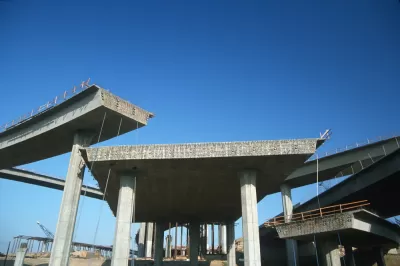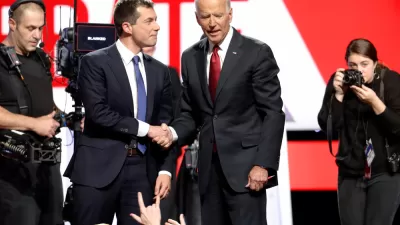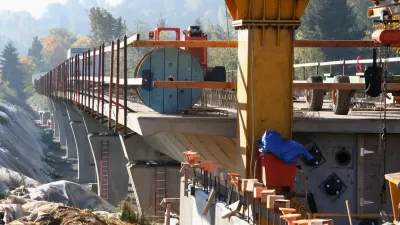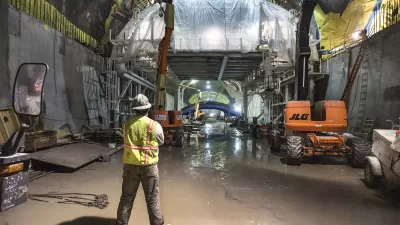While there are many reasons to break away from automobile dominance, the RAISE grant program is the only federal effort fully reflecting a public transit and active transportation priorities.

Laura Bliss reports for Bloomberg CityLab on the potential of the first round of RAISE grant program funding, announced on November 19 by the U.S. Department of Transportation, to make substantive changes to the pro-automobile priorities established by its predecessor program, the Trump administration's BUILD grant program, and over a century of U.S. transportation planning.
According to Bliss, the nearly $1 billion allotted by the RAISE grant program is much more focused on alternative transportation modes (i.e., not road expansion projects). "[O]nly about 5% of RAISE funds will support new roads, and 10% will go to projects that increase road capacity," according to Bliss. "The rest will flow to a mix of projects such as a freeway cap in Atlanta, a greenway project in Cincinnati, transit planning in Omaha, Missoula and Charlotte, and pedestrian and bike safety improvements in Denver, Oakland and Wilmington."
Bliss notes that the financial equation differs greatly from the Infrastructure Investment and Jobs Act (IIJA), which despite spending a record amount on alternative transportation projects also includes record amounts for road building (without the previously planned guardrails that would have made it more challenging for state departments of transportation from spending federal funding on the transportation status quo).
The article includes more insight from transportation experts about how to track and evaluate the use of both RAISE and IIJA funds in the coming months and years.
FULL STORY: Car-Free Transportation Gets Boost from U.S. Grant Program

Study: Maui’s Plan to Convert Vacation Rentals to Long-Term Housing Could Cause Nearly $1 Billion Economic Loss
The plan would reduce visitor accommodation by 25,% resulting in 1,900 jobs lost.

North Texas Transit Leaders Tout Benefits of TOD for Growing Region
At a summit focused on transit-oriented development, policymakers discussed how North Texas’ expanded light rail system can serve as a tool for economic growth.

Why Should We Subsidize Public Transportation?
Many public transit agencies face financial stress due to rising costs, declining fare revenue, and declining subsidies. Transit advocates must provide a strong business case for increasing public transit funding.

How to Make US Trains Faster
Changes to boarding platforms and a switch to electric trains could improve U.S. passenger rail service without the added cost of high-speed rail.

Columbia’s Revitalized ‘Loop’ Is a Hub for Local Entrepreneurs
A focus on small businesses is helping a commercial corridor in Columbia, Missouri thrive.

Invasive Insect Threatens Minnesota’s Ash Forests
The Emerald Ash Borer is a rapidly spreading invasive pest threatening Minnesota’s ash trees, and homeowners are encouraged to plant diverse replacement species, avoid moving ash firewood, and monitor for signs of infestation.
Urban Design for Planners 1: Software Tools
This six-course series explores essential urban design concepts using open source software and equips planners with the tools they need to participate fully in the urban design process.
Planning for Universal Design
Learn the tools for implementing Universal Design in planning regulations.
City of Santa Clarita
Ascent Environmental
Institute for Housing and Urban Development Studies (IHS)
City of Grandview
Harvard GSD Executive Education
Toledo-Lucas County Plan Commissions
Salt Lake City
NYU Wagner Graduate School of Public Service





























